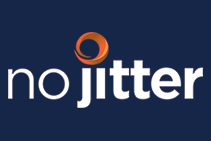IT and digital transformation leaders constantly face the build vs. buy dilemma—whether for customer relationship management (CRM), operational, or the many other systems and applications their company needs to conduct daily operations.
Now, they face a predicament when it comes to communications platform as a service (CPaaS) that will either future-proof their communication strategy or cause growing complexity that will hold back future progress.
It’s a dilemma IT and digital transformation leaders can’t ignore because CPaaS plays a crucial role in enabling their organization to enhance its digital competitiveness.
The CPaaS build vs. buy dilemma: explained
Developers are likely leveraging the APIs and SDKs offered by traditional CPaaS providers. These providers offer a self-serve model for building applications supported by pay-as-you-go pricing. The developer selects what language they are programming in and copies the code into their software. Everything that follows falls on the IT team to manage, including hosting, scaling, debugging, compliance, and reporting.
Many organizations that develop with this type of provider often face a proliferation of single applications as they approach each application or use case individually. What started as sending simple SMS alerts in one application will likely grow into hundreds of disconnected applications that power conversational interactions, call deflection, proactive notifications, and other types of customer journeys. Each application will have its own code, system integrations, and logic.
The approach to building and managing CPaaS applications described above becomes unsustainable for large organizations. Without significant developer and IT resources, it becomes increasingly difficult to scale new channels and journeys, implement future updates, and in our experience, leads to broken customer experiences.
Eventually, the in-life management and ongoing maintenance become so cost-intensive and resource-draining that enterprises will look to centralize the management of their applications and journeys to overcome this challenge. This central platform is something management can choose to build or buy because some CPaaS providers focus on the full-application lifecycle and offer a solution to building and managing hundreds of applications and journeys—this is Enterprise CPaaS.
Enterprise CPaaS provides a central platform for building and configuring communications-enabled and customer engagement applications end-to-end through an API and low-code toolset. The platform acts as the glue between systems and channels, providing a single point of orchestration that lays the foundation for delivering a connected, relevant, and holistic communications experience. Inbound and outbound integrations into systems and channels only need to be made once, then can be used across every CPaaS application enabled by the platform— reducing complexity and simplifying the ongoing management of communications.
This type of CPaaS provider typically takes a tiered approach to pricing, breaking down their offering based on access to platform features, the scale of customer interactions, and channel-specific messaging fees. While the initial investment might be more costly, organizations will save in the long run by efficiently solving the single application challenge, accelerating their IT roadmap, and extracting more value from backend systems.
When is it time to invest in the full platform?
Now that we’ve covered the build vs. buy dilemma, here are four considerations for when to invest in a central CPaaS platform:
- When you want to elevate your development team. Enterprise CPaaS platforms provide more out-the-box capabilities that remove the mundane tasks the developers must deal with regularly. A visual builder enables applications to be built, configured, and updated as flows that visualize communication journeys. This key feature allows developers to take a configuration-based approach to development because it exposes a wide variety of pre-built functionality, logic, and configurations as building blocks that can be dragged and dropped into flows. In addition, more advanced platforms feature tools that help with debugging, enhancing security, consent management, etc.
- When you want to focus on CX and digital transformation. The Enterprise CPaaS platform and its features help accelerate IT roadmaps without compromising control or flexibility. As the prototyping, scaling, and updating applications processes are simplified, developers and the wider IT team can focus on the things that will help the business achieve more in the market. This strategy includes optimizing customer journeys to deliver better experiences and integrating new CPaaS technologies and channels.
- When you want to shift from send/receive to end-to-end journeys. Traditional CPaaS focuses on the sending and receiving of messages and calls. But, with the central platform approach, you’ll be able to automate journeys end-to-end that utilize multiple systems and channels. All while collecting data along the way and feeding these data points into analysis funnels, whether for A/B testing or tracking customer behavior.
- When you want to democratize CPaaS to the wider business. The use case for an Enterprise CPaaS platform extends beyond the developer. Technical architects, data analysts, and staff within marketing, customer support, and operational teams can utilize certain features, such as in-built reporting, template tools, and components built by developers to manage their part of the communication experience.
A CPaaS buyer’s guide for IT and digital transformation leaders
Here we highlighted why it’s important for IT and digital transformation leaders to understand what sets CPaaS providers apart and the key considerations that need to form part of the purchasing process. To learn more about:
- The different types of CPaaS provider
- What’s makes CPaaS enterprise-grade
- CPaaS use cases across marketing, customer service, and operations
- How your decision impacts your organization









